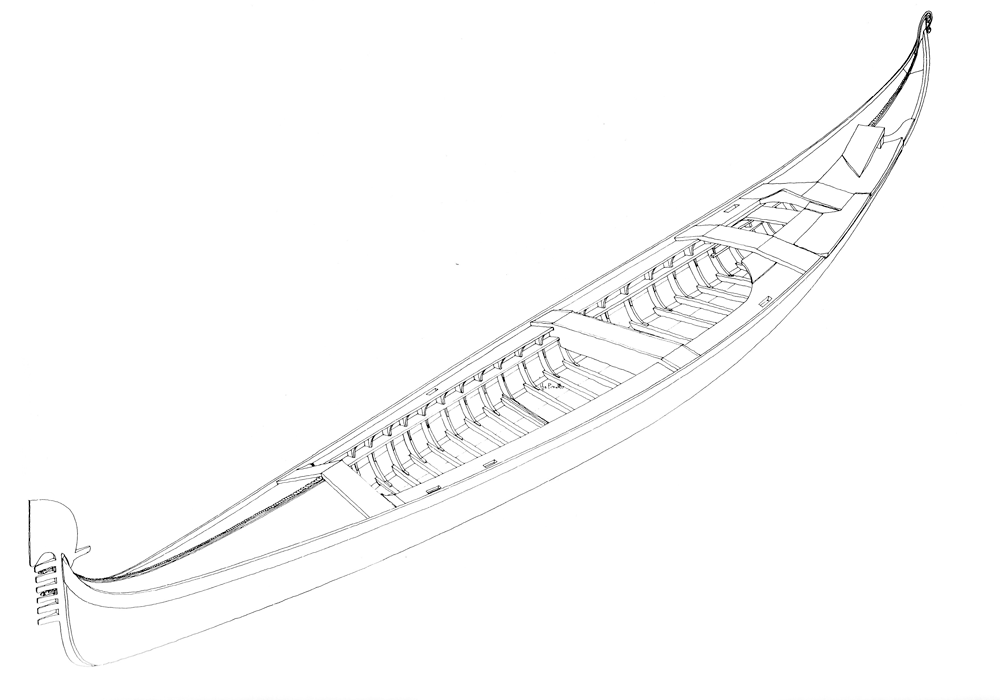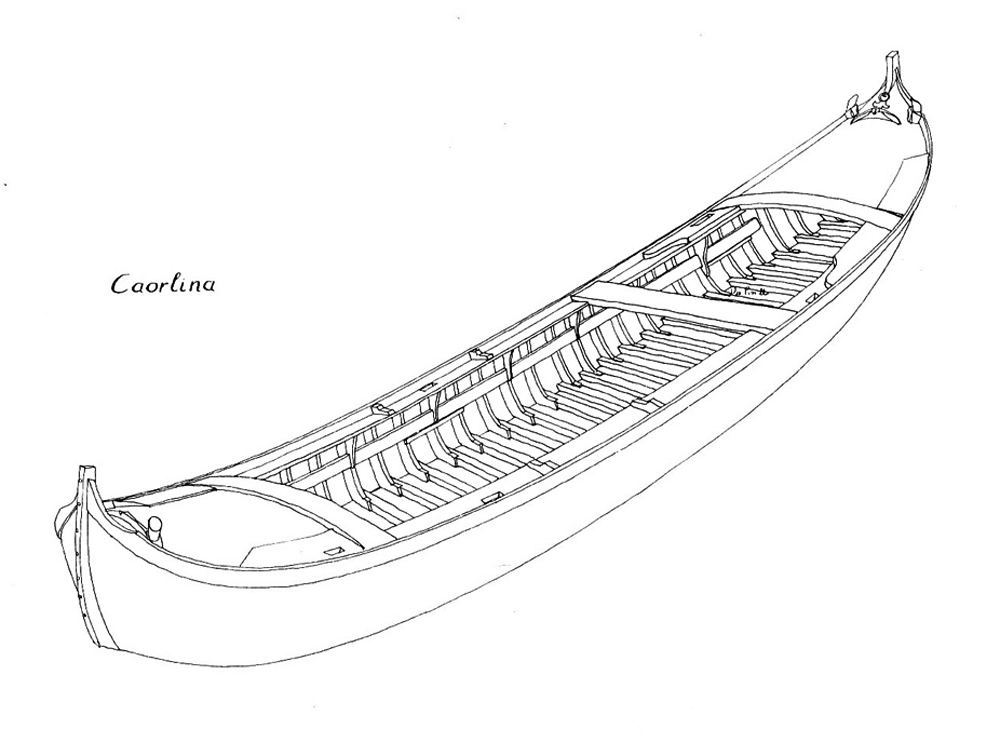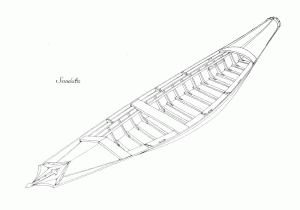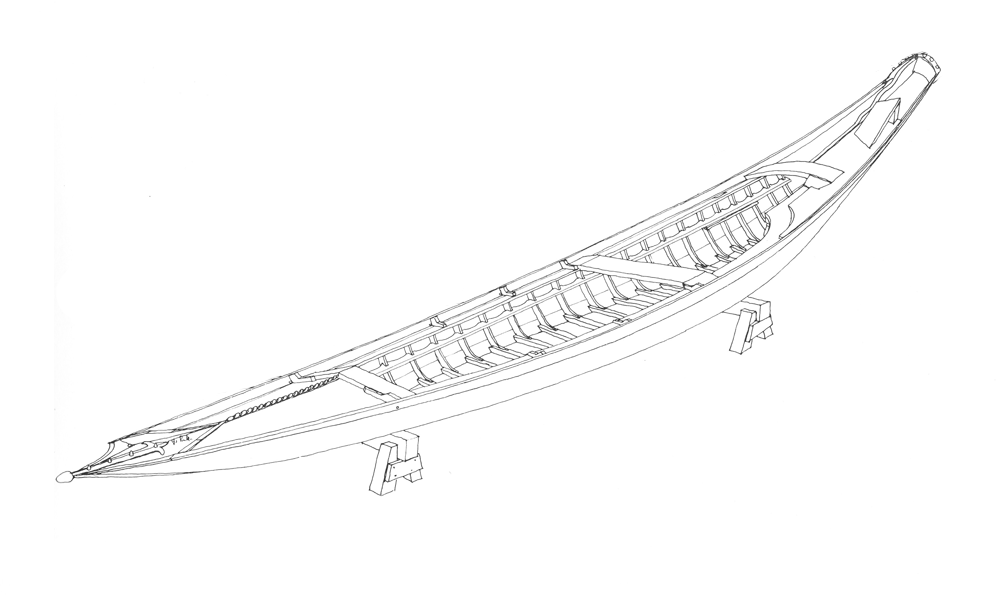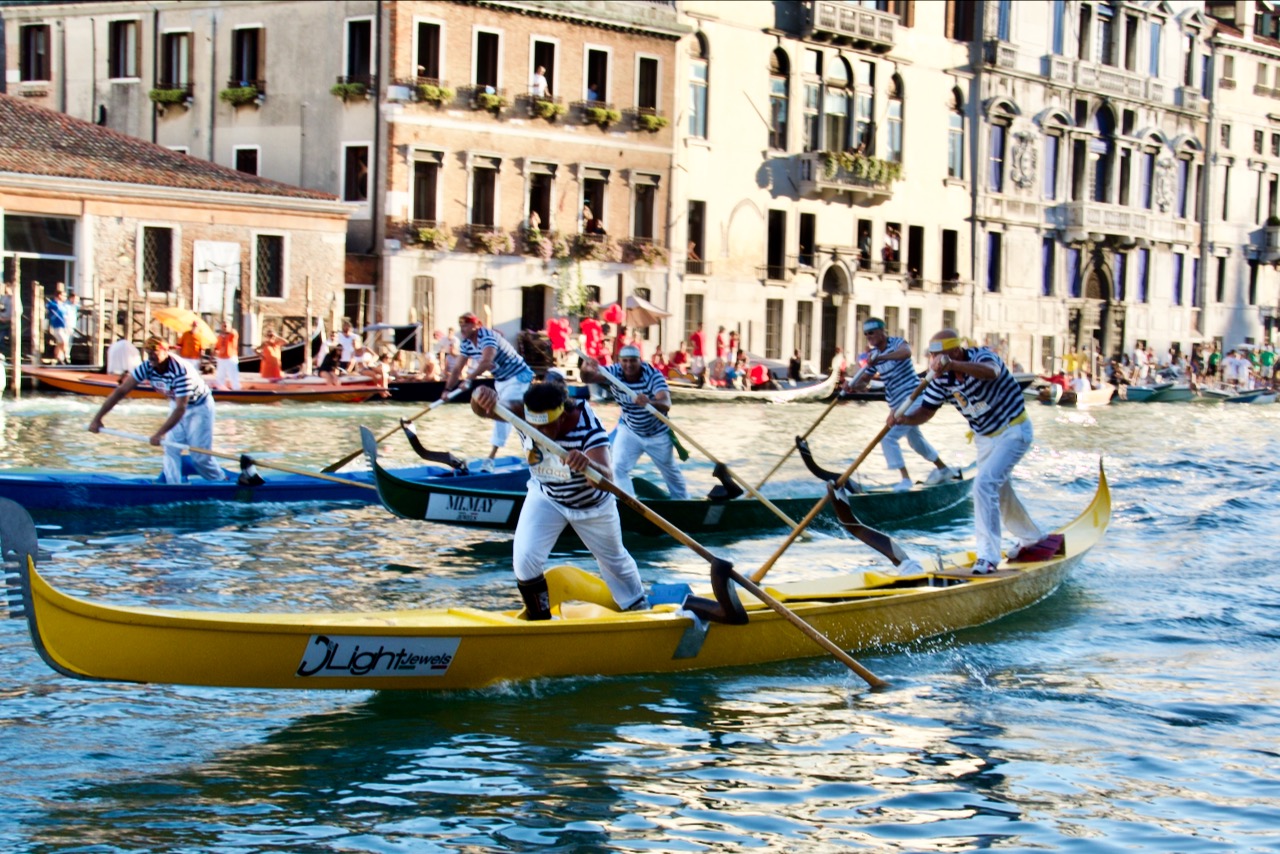Our Boats
The boats of City Barge include a collection of 9 Venetian boats—most likely the largest outside Italy—a ceremonial, six-oared shallop, and several sliding seat gigs.
Club Boats
There are nine club boats, six of which are normally kept in our Oxford boathouse. Six are Venetian models and one is a double, sliding-seat gig. We have four sandolos, a mascareta and a gondolino. We have just completed construction of an identical mascareta, so we’re able to use the pair for racing.
Club boats are available to row, as a group, every Saturday morning, unless the river is flowing too fast. In the winter, we have arranged to moor two boats on a nearby lake so that experienced members can row and practice there until river conditions improve.
Boats are also available to members to use at times to suit themselves, when they are sufficiently experienced.

VENETIAN BOATS
Le Barche di Venezia
Since the earliest time when the Venetian islands became inhabited, the only way of travelling among them was across the the waters of the lagoon. Since then, Venetian boats have been tailored and built for every possible size and purpose. Over the centuries, the design and method of construction has remained basically the same, only the sizes and shapes have been adapted to a myriad of particular uses. Many of the estimated once-50 different types of Venetian craft have long been abandoned, where others have flourished in today’s sporting an leisure environment.
Types of Venetian Boats
In broad terms, the types today are divided into two classes: commercial and private. Commercial boats these days have a motor, though before outboard-motors arrived (after WWII) they were propelled by oars, sails, poles, horses or even pulled by hand. Most traditional private boats nowadays are propelled with oars, sailed or have a small outboard motor.
The City Barge Rowing Club only uses boats propelled by oars.
Traditional Boats Today
There are many rowing clubs in Venice and most own a variety of types which are used for racing, touring and official ceremonies such as the opulently costumed Corteo Storico. Up until quite recently, boats have been constructed without written plans, relying on the experience of the boat builder (known as a maestro d’ascia) who would adhere to tradition but with the possibility to adjust the general shape and size to best suit the application. Modern techniques using drawings and newer materials have developed into more standardised designs.
VENETIAN BOATS
owned by The City Barge and a number of private owners in England
Gondola
Developed as a private conveyance with one or two rowers, the design and decoration were limited by law in the early nineteenth century. Painted black and rowed by a single oarsman, it has become a tourist icon of Venice. The hull is asymmetrical, curved slightly to the right making it easier to steer straight with one oar. The rower stands on a small rear deck.
Ballotina
Very similar to a gondola but is used more often for ceremonial occasions; and is also slightly asymetrical. Not generally painted black.
Caorlina
Recalling its namesake city, Caorle and once used for fishing and larger cargos, the caorlina is used today exclusively as a touring and racing boat. It’s propelled by six rowers, but it’s also often rigged for traditional Venetian sailing, known as the Vela al terzo. (City Barge does not own a caorlina).
Sandolo
By far the most common rowing boat, with the widest variety of variations, some of which have developed into classes of their own. They are rowed by up to four people which contributes to their stability and versatility.
Puparin
In the 19th and early 20th century the pupparino was referrred as “the Ferrari of the canals”. Once used for lagoon surveillance, this variety of sandolo was developed into a fast and stylish craft, with an asymmetrical hull like the gondola. It’s rowed from the raised aft deck by a crew of two or four people.
Gondolino
This class of boat was introduced in 1825 an crafted specifically for racing. It is light, fast and two-oared; due to the low sides it is quite difficult to row. It has the general appearance of a miniature gondola. Gondolini are the fastest of the racing boats and are always used in the races of champions, such as the Regata Storica.
S’ciopon
The most compact craft of the sandolo family, the s’ciopon was used for hunting wildfowl in the lagoon. Armed with a huge shotgun (known as the s’ciopo and now outlawed, fortunately), which rested on the flattened, triangular bow and the single cross board, the sole hunter would row slowly (often alla valesana, a rowing technique using one oar in each hand) through the reefs close to the birds, fire the gun into the flock and collect the carcasses.
Today the s’ciopon is popular with new rowers due to its stability and manoeuvrability.
— Tim Williams
—Drawings by author and traditional Venetian boat specialist Ugo Pizzarello

